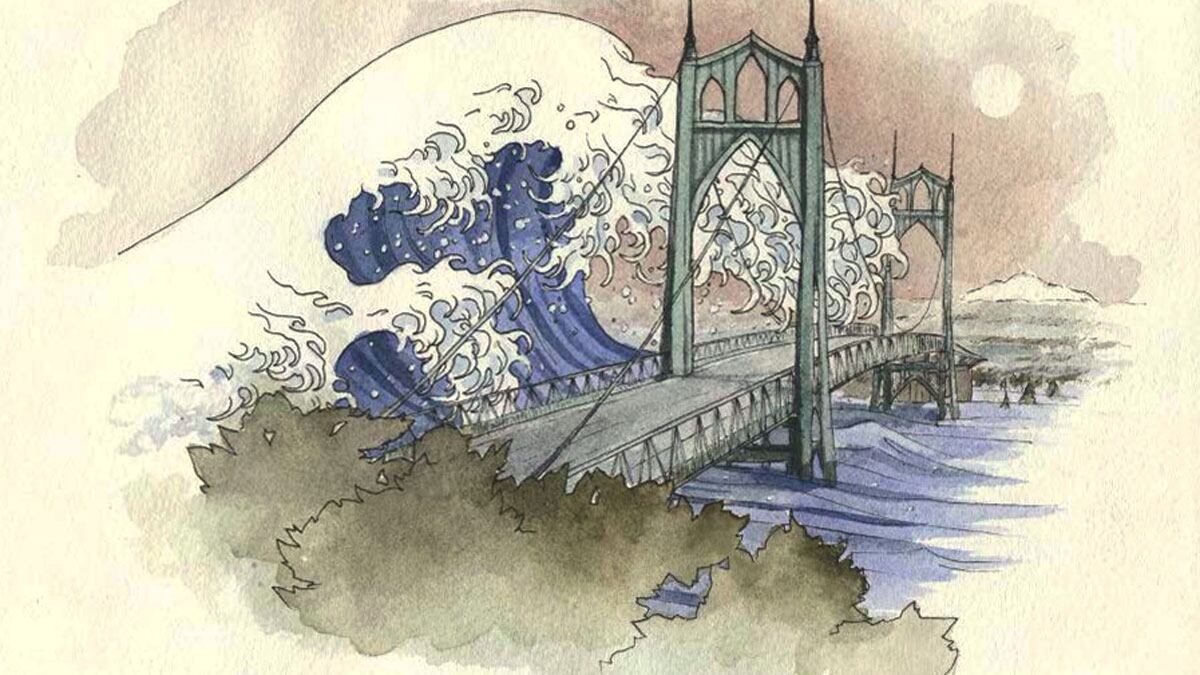In late March, after heavy rains fell on an unusually deep Cascade snowpack, the Columbia River crested in Portland at its highest level in 20 years. Phil Ralston, the Port of Portland's aviation environmental and safety manager, gestured out the window of a conference room at Portland International Airport.
"If it weren't for levees," Ralston said that day, "our runways would be underwater."
Two things have prevented the sort of catastrophic flooding that occurred last week across Texas from happening here in recent decades.
The first is good fortune: Portland hasn't had an extraordinary storm for some time—or a disaster like the 1980 eruption of Mount St. Helens that choked rivers with debris. Both have happened before and probably will again.
The city's second defense is more substantial: 27 miles of levees. These man-made earthen walls—like the one under Marine Drive—keep the Columbia River at bay.
But the levees are old and no longer certified by the U.S. Army Corps of Engineers.
And officials are struggling to comply with federal requirements for levee upkeep—a challenge compounded this July, when the Legislature couldn't scrape together $267,000 to help complete the investigation of the current soundness of the levees.
As Oregon experiences weather extremes triggered by climate change—witness this winter's deadly freeze and blizzard, and our summer of record heat waves—the need to prepare for disastrous conditions is growing more acute.
Yet more than a decade after Hurricane Katrina prompted federal demands that drainage districts around the country demonstrate by 2017 that their levees can withstand 100-year floods, little has happened locally, even as officials warn that a failure to prepare could leave 7,500 people and $16 billion worth of property vulnerable.
Corky Collier, executive director of the Columbia Corridor Association, which represents 2,500 employers in North Portland, says the levees protect the state's largest concentration of industry—and substantial infrastructure that would be underwater if levees failed.
"Look what happened in Houston," Collier says. "They were prepared for flooding, but this is flooding like we've never seen before."
In Portland, initial estimates put the cost of meeting federal levee certification requirements as high as $100 million—money no local agency has ("When the Levee Breaks…Us," WW, April 1, 2014).
The cost of doing nothing would be much higher. That's because without federally certified levees to protect them, property owners could not get insurance—and without insurance, they could not obtain mortgages or other forms of credit.
"If levees don't retain federal accreditation," says Stephanie Hallock, an adviser to the levee repair project, "it's as if they are not there."
A levee failure could have enormous human and financial consequences.
In 1948, a levee broke, causing the Columbia to inundate Vanport—once Oregon's second-largest city and now part of North Portland. More than 18,000 people were driven from their homes and at least 15 people died.
"There aren't many people in Portland who remember the Vanport flood," says the Port's Ralston. "We try to use Vanport and the flooding in 1996 to educate and remind people that it can happen here."
Today, the region's major airport is in the floodplain, as are a transcontinental railroad line, Interstates 5 and 205 and the Columbia south-shore well fields. Those wells serve as Portland's backup source of drinking water when major storms make Bull Run water too dirty to drink.
Four public agencies called drainage districts are responsible for maintaining the Columbia's levees, the oldest of which dates back to 1917. The Multnomah County Drainage District is the largest of the four districts; the others are Peninsula Drainage District Nos. 1 and 2 (both in the city of Portland) and the Sandy Drainage Improvement Company.
The threat of losing insurance coverage brought the Port, the city of Portland, Multnomah County and 10 other jurisdictions together in a partnership called Levee Ready Columbia. The partners contributed money to investigate what repairs the levees would need to meet federal standards and also began trying to figure out how to pay for the work. They've completed investigations of two of the four drainage districts, making enough progress to keep the feds at bay, although there's still no final budget or plan to finance the work that must be done.

Despite the importance of the levees, lawmakers' failure to provide funding this session threatens to delay progress on shoring up the levees.
The state's share of Levee Ready Columbia's budget for the next year is $267,000—and in the 2017 session, lawmakers found money for plenty of pet projects but declined to fully fund Oregon Regional Solutions, the agency contributing to the levee project.
Levee Ready Columbia has since asked Gov. Kate Brown for help, which seems likely to materialize after Hurricane Harvey.
"Gov. Brown supports upgrading the levees for accreditation and recognizes the important role they play in ensuring the safety, well-being and economic vitality of the Portland metro region and the state as a whole," her spokesman Bryan Hockaday said in a statement. "[Brown's] office and state agencies are working to identify alternate funding sources."
Hallock says the partner agencies working on recertifying the levees hope to have a budget in place by December.
Collier says his members are eager to move forward. He knows from personal experience that rivers can reach levels people never expect.
In 2000, he lived near the American River in Northern California. A storm howled out of the Sierras, and floodwaters swept away his house, including the foundation, dashing it to bits against a bridge downstream. (He wasn't home at the time.)
"My place was right at the 100-year flood level," Collier says. "I worried about theft and fire—but flood insurance, no. There was no reason to worry about it."

